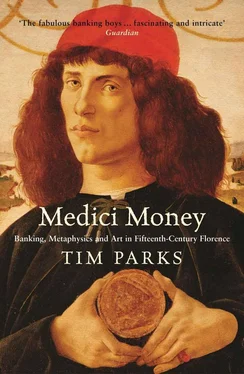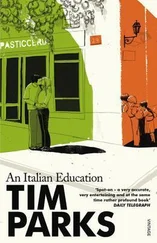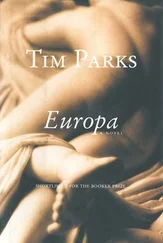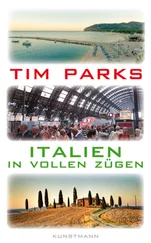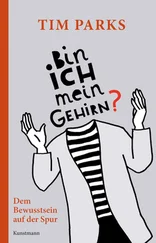Cosimo took over the venture and got together the young architect and sculptor Michelozzo and the versatile genius Donatello. The Merchants’ Guild, which was responsible for the church’s interior decoration, expressed scepticism. No fancy stuff, they warned. The tomb must not project into the floor space. The artists placed their work between two existing pillars that stood against the wall. It did not project, but rose, through a loophole in the rules, twenty-four magnificent feet up the side of the church. Above three marble bas-reliefs showing standing female figures — Faith, Hope, and Charity — rested the sarcophagus, on the side of which two naked angels unfurled a scroll. Above the sarcophagus, carved in marble, was a narrow bed complete with mattress and pillow; and lying on the bed, entirely human and apparently asleep, his handsome, intelligent face turned toward the congregation, lay Baldassarre/Giovanni, cast in gleaming bronze. Above the reclining figure, taking the monument even higher, rises the most elegant bedroom canopy, again carved in stone and with its curtains apparently just drawn apart, and at the apex of the canopy, a ring appears to fix the whole structure to a point where the wall of the church juts out. The scroll, held by the angels on the side of the sarcophagus, announced IOHANNES XXIII QUONDAM PAPA—“John XXIII, erstwhile Pope.”
Was the monument obtrusive? It obeyed orders about depth. But the bronze did gleam so brightly in the early sunlight while morning mass was recited; the reclining figure was so very human, so clearly a man of character, and so evidently neither in heaven or hell, that it was hard not to be distracted. Above all, that inscription, “erstwhile Pope,” brought a gust of schism and ambiguity into the eternally still air of the Byzantine mosaics. Had he been pope or not? Nothing is more inimical to the diktat of revealed truth than the complexity of human history. Martin V hated the monument. Baldassarre was never pope, he insisted. The Giovanni XXIII domain was still available. This man was the Medici’s friend, people whispered. They paid for this tomb. How fascinating it all was! As if, in the niche of the medieval church, where one expected to find a rigid symbolic representation of this or that virtue, a real person appears, not easily judged or categorized. The effect is not unlike those moments in Dante’s Inferno when one of the damned ceases merely to represent this or that sin and becomes a man or woman with a complex story, someone we are interested in, sympathetic toward.
Did the Medici banker know what he would be getting when he commissioned Baldassarre Cossa’s tomb? We do not know. But whatever his intentions may have been — to honor a family friend, to embellish a church, to suggest the power of Medici money — Cosimo was a man who saw when there was a lesson to be learned. Something had shifted in the hitherto-timeless stasis of the church. From now on, Donatello would be Cosimo’s favorite sculptor, Michelozzo his preferred architect.
Cosimo was thirty-one. It was 1420, and his father, turning sixty, retired from the bank. Piero di Cosimo, first of the next generation, was four. A second son, Giovanni, was on the way. The wife and mother, Contessina de’ Bardi, was jolly, tubby, and practical. Uneducated, she was not allowed in Cosimo’s study. Away on business, he rarely wrote. Marriages were arranged and that was that. She was a Bardi and he a Medici. Neither complained. On the contrary.
Taking over the bank, Cosimo went down to Rome for three years where Martin V’s preferred bankers had just failed and the Medici were back in the papal saddle again. A relief. What kind of man is Cosimo? Polite, unostentatious. He prefers a mule to a horse. Challenged, he is pithy and cryptic. “Cosimo, I wish you would say things clearly so I could understand you.” “First learn my language,” he replies. “Cosimo, how should I behave on this diplomatic mission?” “Dress like a lord and say as little as possible.” It’s a style that allows you to be smart, without giving much away. To confide in a man is to become his slave.
Cosimo loves collecting books, religious and profane. Reading one entitled Monastic Institutes , he marks passages stressing patience and discretion, and what to do about the temptations of the flesh. In Cicero’s On Oratory , he notes that an audience may often be won over if you appear to take the majority opinion. Interesting reflection. He’s not interested in jousting or piazza sports. But he is a member of a religious confraternity. People get together once a week to sing praises to God, give each other a penitential whipping, and plan street processions in honor of patron saints. Cosimo commissions a fancy bas-relief chest from Ghiberti to hold the relics of three obscure martyrs. He’s fascinated by astrology and magic, but he loves banking. “Even if money could be made by waving a wand,” he says, “I would still be a banker.” Why? Banking involves manipulation, risk, power. It’s magic that works.
Cosimo is immensely ambitious. The Medici family was once second to none. He is also immensely cautious. The Medici family was disgraced. In 1421, his father, Giovanni di Bicci, is elected gonfaloniere della giustizia (standard-bearer of justice), head of the Florentine government. It’s the first time the honor (a two-month appointment) has gone to a Medici since Silvestro sided with the woolworkers’ revolt in 1378. The family is on the up again, third richest in the city. Who knows what might be possible? But Cosimo is also constantly aware of his mortality. He was born a twin, his brother Damiano died at birth. And death means eternal judgment. What doth it profit a man if he gain the whole world and lose his soul? However many fine sculptures were made showing beautiful human figures, this ultimate truth could not be avoided. Cosimo’s destiny was to steer a course between conflicting aspirations — power and security, earthly wealth and paradise. With patience. Discretion. Hiding ambitions behind majority opinion. “ Semper ,” was the motto he eventually came up with for himself, “always,” together with the diamond as a symbol, something precious and extremely resistant. Nothing in the history books gives us a sense of the man’s ever having been young. Unless perhaps during those three years down in Rome.
Thou shalt not gamble. This was one of the commandments a Medici employee signed up to when he went to serve the bank in some distant branch. Years later, when Archbishop Antonino asked Cosimo to support a drive to stop the clergy from gambling, the banker replied, “Maybe first we should stop ’em using loaded dice.” It was a religious age in love with transgression. There is no contradiction. Article seven of the Medici employee’s contract said, “Thou shalt not keep a woman in the house.” Your Florentine wife didn’t travel, of course, and local liaisons meant scandal.
In the Eternal City, Cosimo settled in Tivoli. Deprived of stout Contessina’s domestic skills, he asked an agent in the bank’s Venice branch to find him a slave. The keeping of slaves had been permitted since the late 1300s after the plague had left the working population seriously depleted. The epidemic struck down men and women, old and young alike, of course, but the slaves brought in to solve the shortage — from the Slavic countries, Greece, North Africa — were almost all young women. She is “a sound virgin, free from disease and aged about twenty-one,” Cosimo’s agent told him. Quite an advertisement. Himself a declared devotee of the Virgin, Cosimo called the girl Maddalena, after a more ambiguous Mary, and some time later she bore him a child, Carlo, with marked Circassian features. We do not know how much embarrassment this caused, but clearly being a manifest adulterer was not as much of a problem as being a manifest usurer. No question of restitution here. Cosimo brought up Carlo in his own household together with the legitimate sons, Piero and Giovanni, and later used his influence to get the boy into the Church and have him become bishop of Prato. This was standard practice. It was considered appropriate for the fruits of carnal sin to take vows of celibacy. Hadn’t Saint Jerome rather paradoxically suggested that the only purpose of procreation was to produce virgins for God?
Читать дальше
